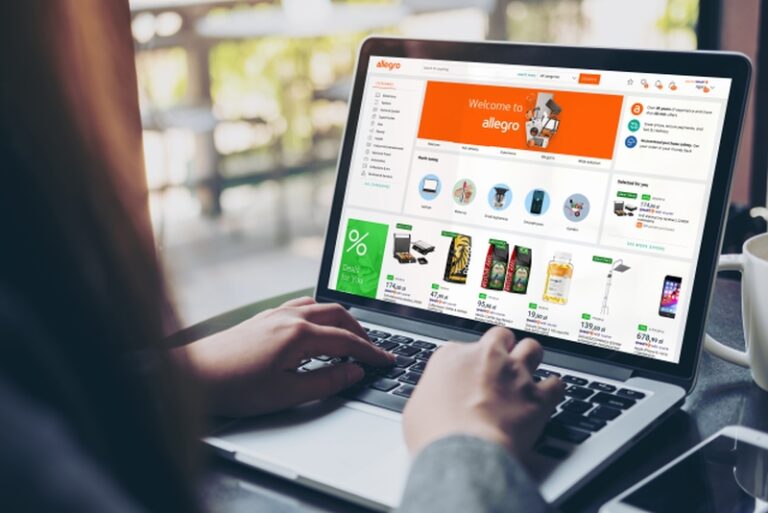If you’re managing an online store, you’ve likely felt the pressure to run more frequent promotions. However, running an ecommerce sale can feel overwhelming, especially when you’re balancing discounts, deadlines, and digital tools.
The good news? With the right approach, you can launch an ecommerce sale that’s both effective and manageable.
After all, an ecommerce sale is really just like any other. The main difference is an added layer of technology and tools. The discount code has to work. The sales prices need to be visible. Customers and online store visitors need to know that the sale is happening.
Let’s dive into how to make all of this happen!
Offering deals and discounts when selling online is about more than a quick revenue boost. Understanding these additional benefits will help guide your sales planning process and also help avoid pitfalls that can lead to unhappy customers or shrinking profit margins.
Sales attract new customers and leads
Table of Contents
- 1 Sales attract new customers and leads
- 2 Sales delight existing customers
- 3 Sales increase revenue
- 4 Sales reduce inventory
- 5 Sales help outpace the competition
- 6 It becomes a race to the bottom
- 7 It conditions customers to expect discounts
- 8 It erodes profits
- 9 It devalues products and services
- 10 Run ecommerce sales selectively
- 11 Have a reason for the sale
- 12 Design sales to increase average order value
- 13 Think of sales as lead generation
- 14 Promote non-discount related testimonials
- 15 Decide your ecommerce business reason for the sale — your goal
- 16 Specify the customer need or desire your sale meets
- 17 Choose the type of sale to run
- 18 Select the target audience for the sale
- 19 Decide on the timing of the sale
- 20 Create marketing for the sale
- 21 Set up your online store technology
- 22 Run the sales campaign
- 23 Measure results and build on it next time
- 24 Share this:
- 25 Like this:
Ecommerce sales can help break through all the noise and get your online store noticed by potential customers and leads. Online marketing and search engine optimization (SEO) take a lot of work, but running an effective sale helps your online business stand out and attract new customers from your target audience.
You want to find customers who will love your products so much that they keep coming back, and hopefully those outnumber the customers who only care about the deal they’re getting. With a well-planned online sales campaign, you can have both — customers who want what you’re selling and who are even more excited about the deal. Finding this is crucial — especially for growing an online business.
Sales delight existing customers
You can also use ecommerce sales to delight and reward your existing customers. Buying from your ecommerce store once is great, but getting a customer to buy again and again is better. It’s much easier to sell to existing customers than to attract new ones, and running a sale now and then helps increase customer loyalty and improves the customer experience.
They’ll keep coming back if you keep giving them a good reason, and a sale is a good reason.
Sales increase revenue
When you increase ecommerce sales, your business grows. It’s a lot more enjoyable to run an online business when customers are buying stuff and your sales figures are increasing. And while revenue is distinct from profits, revenue is where profits begin.
Running a sale enables you to increase revenue, even if the profit-per-item declines a bit during that time. In other words, making $7 each from 200 items is still better than $10 each from only 100 products sold. A discount campaign can help grow sales volume, justifying the reduced profit-per-item.
If you can leverage a good sale to increase sales volume, you can justify a temporary reduction in profit margins. And, as you’ll see in a bit, you may not need to reduce profits at all. A well-designed sale may actually increase profits while still delighting customers and motivating more purchases.

Sales reduce inventory
Sometimes, you just need to move more products, and a well-planned sale can make that happen. Your ecommerce business might want to reduce the inventory of specific products, or of your overall stock. Whatever the case, if you can clear off the shelves and increase your cash flow at the same time, you’ll have some momentum to build on.
Sales help outpace the competition
It’s easy for ecommerce store owners to sit back and wait for traffic to come to their site. It’s easy to keep doing what you’ve always done.
But selling online using a new discount campaign breaks you out of ruts and habits that may be holding your ecommerce business back. And, it can help differentiate your store from the competition.
Other brands may be sitting around waiting for traffic and running the same campaigns they always run. But you’re innovating. You’re trying new stuff. You’re going after a new segment of customers. You’re giving them a reason to visit your online store instead of the competition.
With effective sales, you can win more customers and turn them into repeat customers.
All the benefits of ecommerce sales are great, but there are a few things to be aware of when planning and running your next sale. Knowing these ahead of time makes it easier to avoid them, and we’ll share some strategies for how to do that in the next section.
It becomes a race to the bottom
In 2024, Kmart closed its last remaining store in the United States. They used to have hundreds of stores and a well-known brand image as a low-price place to shop. That’s a good story to keep in mind, because if you get into price wars with other ecommerce brands and continually try to offer the lowest prices, it’s hard to win.
We’ll look at how to avoid this risk in a moment.
It conditions customers to expect discounts
Some companies run so many sales that their customers expect and even demand them. One well-known retailer ran what amounted to endless discounts for years. One day, all of a sudden, they stopped, and customers revolted. The business is still trying to claw their way back from the revenue implosion that resulted.
You want your ecommerce sales to be events, not routines. You want to surprise and delight prospective customers.
It erodes profits
Running too many sales and continually discounting your prices will cut into profits. So if your ecommerce business becomes dependent on sales, it will be harder to increase profits later, unless you can get creative with your pricing.
It devalues products and services
This may be the main reason to avoid running too many sales. Overly discounting your prices says something about the true worth of what you’re selling online.
Do your products have high quality? If so, customers will pay more for that quality. Constant discounts work against this mentality. So if you want your customers to see your products and services as valuable and of high quality, you want to avoid constantly discounting them. It’s just not a good business model.
Let’s look at a few ideas and sales approaches you can use to reduce the risks of having your ecommerce sales do more harm than good for your online business.
Run ecommerce sales selectively
This is the most obvious strategy to counter the risks of ecommerce sales. Don’t run nonstop sales and discounts. Instead, you can run selective sales like these:
- Holiday sales: People expect seasonal sales on these days already, so you’re not conditioning anyone
- Limited time sales: These only lasts a few days or weeks
- Product-specific sales: Put items that you need to clear out or your most popular items on sale
- Audience segment-specific sales: Have a sale specifically for certain demographics, based on interest, age, occupation, or other factors
- Personalized sales: These make a customer feel special rather than conditioned

Have a reason for the sale
Whatever sale you’re running, have a reason for it. It almost doesn’t matter what the reason is — just have a reason. That way, your customers know this isn’t something that might happen again, because the reason is unique to this moment.
For example, inventory sales work great for this. “Our warehouse is overstocked and we’ve got to clear it out — so we’re having a sale on this product category only. When they’re gone, they’re gone!”
That’s a great reason to sell products at a discount that people will take advantage of because they know it may never come again.
You can get creative and have fun coming up with reasons for a sale. One online business created an email marketing series that offered a sales discount, and pretended the emails were written by the secretary, and then sent them out while the business owner was on vacation.
In the emails, the secretary said he wanted to run a sale while the owner was gone because it would be so fun and exciting, and because the owner never lets him do anything fun.
Of course, the owner knew and probably came up with this sale idea, but it’s a fun way to justify the sale and isn’t something customers can count on happening again.
Here are some more examples of sales justifications ecommerce businesses might use:
- The owner’s kid is graduating soon and you want to throw them a big party.
- Someone was nice to you on the street and you decided to pay it forward to your customers.
- Your favorite sports team won and you want to celebrate.
- You got a great deal on packaging supplies and are passing the savings on to your customers.
As you can see, just about any wild idea you come up with will work. The only purpose of doing this is to prevent your customers from expecting this sale to ever happen again. That will incentivize them to act now and buy.
Design sales to increase average order value
Some ecommerce sales can be restricted to situations that require the customer to spend more in order to access the discount being offered.
For example, a sale offering free shipping, but only for orders above $100, allows you to make more revenue while still offering a discount. This approach prevents you from sacrificing as much profit while still delivering a great customer experience.
You can do this with all sorts of discounts. For example, the sale could be for 10% off across your entire ecommerce website. But if they spend over $100, they get a bonus 10%, making it a 20% discount. Again, you’re incentivizing higher purchase volumes in order to reduce the effect of the discount on your profits, while still delighting the customer.
Customers will love saving 20%, even though they had to spend more to get it.
You can also offer free gifts or bonuses only for people who spend certain amounts or who buy certain products. In fact, a free gift is a discount. You could have no discount at all — just offer a free gift to everyone who meets a certain minimum purchase order requirement. The free gift motivates the purchase, but your main product is still selling online at full price.
And if the free gift is something like a gift card, now you’re giving the customer a reason to come back and shop with you again. Motivating a repeat purchase is a great reason to run ecommerce sales.

Think of sales as lead generation
The goal of a sale doesn’t have to be just for immediate revenue. Do you want to make the sale, or do you want to gain a lifelong customer? You can use a sale to attract customers, turn them into repeat buyers, and increase lifetime customer value.
The gift card giveaway mentioned above is a great example of this.
You can use a sale to add customers to your email list, gain social media followers, increase your membership-based customers, and other strategies that re-imagine customers as people you want to continue nurturing so they form a stronger connection to your business.
This is the justification for using loss leaders, where your ecommerce sale actually doesn’t result in profits, but attracts customers who will spend more later or on other products in combination with the sale item. If you’re confident in your back-end sales process and ability to nurture customers, this can be a very effective strategy.
If you recall, another risk of running sales is that they can devalue your product listings in the eyes of customers.
One way to condition customers to not think that way is to carefully choose which testimonials you feature on your website and in your other marketing.
Look for testimonials that speak to product quality, customer service, extreme value, happiness, solutions, feelings of satisfaction — anything other than “we saved so much money because of the discount.”
Your testimonials offer a way to set the expectations of potential customers for what they can look forward to when buying from your online store.
This results in customers who aren’t coming to you because you have the lowest prices. And that’s a good thing. That way, when you do run sales and discounts, it’s like a surprise bonus.
So, now that we understand the benefits of running ecommerce sales and how to minimize the risks, let’s dive in and figure out how to sell online using discounts. It begins with you.
Decide your ecommerce business reason for the sale — your goal
This isn’t the same thing as the reason mentioned in the last section. That was a customer-focused reason to help them see your sales campaign as a one-time sales event.
Here, we’re talking about the company’s internal goal for running the sale. What do you want to accomplish? Do you want:
- More new customers
- A quick, fast cash infusion
- Inventory reduction
- Attention in the marketplace
- Happy loyalty program members
- More loyalty program members
- Business growth
- More email or SMS subscribers
As you can see, your motivation for running this sale can play a big role in the type of sale you create. It doesn’t have to be complicated. “We just want to increase sales for more money” is a reason. But you want to know your goal so you can design a sale that will help achieve it.
Specify the customer need or desire your sale meets
Next, try to identify something in your customer base or target market that this sale will appeal to. Is there a specific problem one or a few of your products solve that you can feature in the sale?
This is a smart strategy because it offers another motivation for shopping from your online store besides just saving money with the discount.
For example, consider cat owners who are tired of giving their cat the same processed food year after year.

They want something new, different, fresh, healthy, etc. That’s a desire and a need, and you can feature that in the marketing campaign for your ecommerce sale. Then, if first-time customers also save 30% of their first order at your store, now they’re getting a great deal and the higher quality cat food they’ve been wanting.
If your internal reason for having the sale is to gain more customers, you can see how each step in this process influences the type of sale you run.
In this case, the offer only applies to first-time customers. Why? Because the internal goal is new customers. And by promising to meet a very real desire of these customers, you’re giving them something much more valuable than just a great deal they’ll use once and never come back.
Choose the type of sale to run
Here’s where what you read earlier starts to pay off. You already know several types of discounts you can use, and which ones you use depends, in part, on your goals. Some common ones:
Sitewide discounts
This one applies to everything on your ecommerce site and gets applied at checkout. It’s a sale that covers everything. The Cart Discounts for WooCommerce extension enables you to do this in your WooCommerce store.
Percentage discounts
For any sale, you can choose to run it as a percentage discount. This can be a single percentage, or you could use tiers, as mentioned earlier, to motivate a higher average order size.
Dollar off discounts
Instead of percentages, you can also offer dollar off discounts. And just like percentages, you could offer a flat discount for the entire purchase, or use tiers to motivate higher average order values. You can also require a minimum purchase, which makes more sense for a dollar off discount.
Free gifts with purchase
You’ll have to decide what the free gift might be, but this works well because it means you aren’t discounting your other products. And if you can bump up average order value, the free gift will delight the customer but cost you very little.
The free gift could be another of your products that is or is not complementary to what they’re buying. Or, it could be a totally different item you don’t even sell, but that you’re able to procure to facilitate your sales campaign.
First month free
If you have a membership or subscription as part of your ecommerce business, first month free discounts work great for increasing your long-term revenue. You can also sweeten this deal by combining it with other strategies, such as a free gift, or more than one month free, or an additional dollar off discount if they spend over a certain amount.
It all comes back to your goal. If your goal is to increase your membership subscribers, you can justify almost any type of sale or discount if it gets more people signed up and paying monthly.
Buy one, get one free
This is really just a creative type of percentage discount, but only on particular products. People love BOGO sales, and if you can make it work, your sale will generate a lot of response.
Discounts for new subscribers
Instead of offering the first month free, you can also win new subscribers by offering them a coupon they get to use after subscribing. So this is a post-subscription discount, whereas the other one is a pre-subscription discount.
You might want to use this marketing tactic if your goal is to gain more email subscribers. Once they receive their discount code, they’ll also begin receiving your email marketing, through which you can incentivize customers to make more repeat purchases.
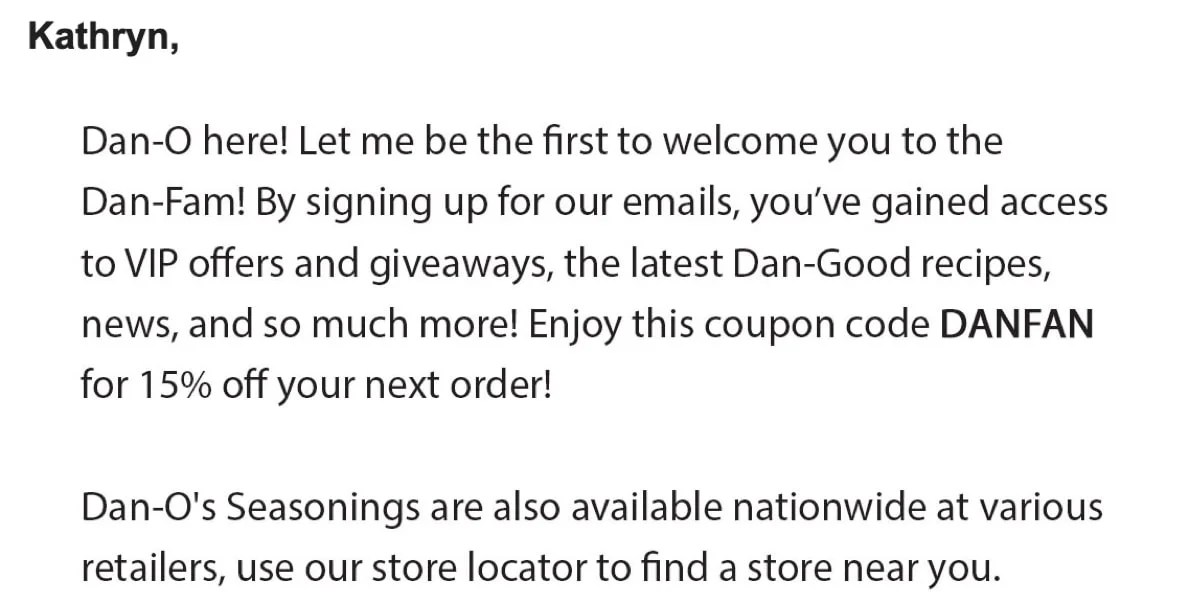
Free shipping
As mentioned earlier, free shipping deals make customers very happy, and high shipping costs are one reason customers abandon their carts. But shipping is expensive for ecommerce stores, too. Someone has to pay.
That’s why many ecommerce businesses like to offer free shipping deals only for shopping carts above a certain minimum value. At that point, it becomes another version of a dollar off discount.
You could also again use a tiered approach. Maybe you can give customers 50% off their shipping if they spend more than $50, and free shipping if they spend over $100.
Product category discounts
Maybe you want your sale to only apply to certain product categories. There are many reasons to do this. For example, you might have too much inventory in certain products, or it’s about to become expired or outdated.
You might use this as a strategy for increasing average order value, knowing that most customers will buy other products in addition to the discounted ones. This can be an especially effective strategy if you make the discounted product one of your less popular but still steady products. Use that to win the sale, knowing many customers will buy your more popular products at full price as part of the same transaction.
Maybe it’s a brand new product, or you want to compete against another business on that product. A plugin like Category Discount WooCommerce makes it easy to offer this type of ecommerce sale.
Flash sales
Flash sales are usually given without prior notice, and they end very quickly. Usually, they feature higher than usual discounts, motivating immediate action. All the other types of discounts and sales in this list could also be positioned as flash sales.
Personalized sales
Customers feel extra special when they experience exclusivity. If they are the only one getting a discount, they love it, because it’s like they found treasure and no one else can have it. The emotional rush of that will be very good for customer loyalty.
You can do this with personalized coupons. You can also use the Custom WooCommerce Discount for User plugin to create customized rules based on certain conditions.
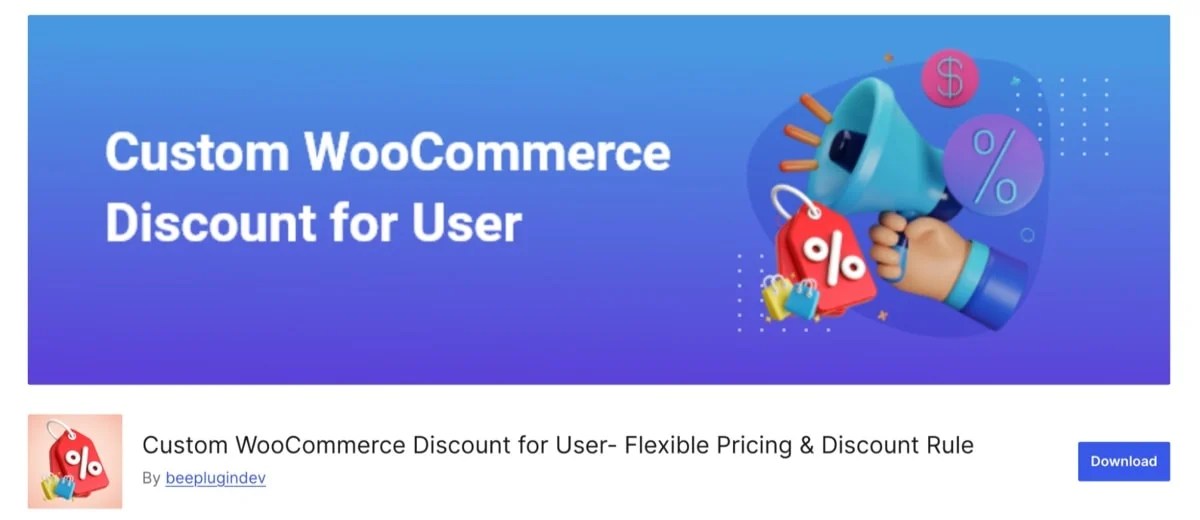
Select the target audience for the sale
You might try offering discounts only to certain segments of your audience. Here are some segments that your ecommerce business could target:
- Loyalty program members
- Membership subscribers
- People who have purchased certain products or product categories in the past
- Customers who have been with you a certain amount of time
- New potential customers
- Social media followers
- Webinar attendees
- Lapsed customers
- Holiday shoppers
- People who like to buy certain types of products
There are numerous others, and each ecommerce website will probably have some unique segments you could come up with that apply only to you.
Targeted sales work because customers now feel known and special. And, this type of sale is another they will correctly conclude may not come again, so they should take advantage of it.
Decide on the timing of the sale
There are two questions to answer here:
- When
- How long
When do you want your ecommerce sale to begin, and how long will it run? This can be anywhere from a few hours to several weeks or even a month or two. Going much longer than that isn’t usually wise because then you’re getting into that forever-sale mentality, and your customers will grumble when it ends.
If it’s a seasonal sale, do you want it to happen only on the exact holiday, or perhaps add a few days of extra room on either side?
Create marketing for the sale
Depending on what you’ve decided for the previous steps in this guide, you’ll know how to craft your marketing.
Market to segments
If you’re targeting the sale at particular segments, send the marketing only to them. For example, if you want to run a sale for all your Facebook followers, you’d do that by posting over and over on Facebook, and perhaps paying for a few Facebook ads or boosted posts. You might also send out a few emails encouraging people to visit your Facebook page to claim the discount. Or you could ask them to follow you.
Market on your website
For other segments, you might need to add a banner or special section on your home page to call them out. If it’s a product-interest-based sale, feature that product and promote the deal right on the homepage.
Also change the product page for that item. You could also create a temporary landing page just for that sale so you can link to it from other places and track your marketing efforts.
You’ll probably want to create email marketing for most of these sales, or send text messages if you have an SMS list. You may want to run paid advertising with Google Ads, social media ads, display ads, or video ads. You might send out postcards to your existing customers.
Give yourself time to create a marketing strategy and implement the details before the sale begins.
Set up your online store technology
Running an ecommerce sale requires some adjustments to your website. It also means utilizing technology that enables your sales campaign to function.
You’ve already seen a number of these in this article, with various WooCommerce extensions that enable you to offer certain types of discounts. And you can find more detailed instructions here on how to use those and other extensions.
Shipping tech
Another one you might need is a shipping extension, especially if you want to offer free shipping as part of the sale. WooCommerce has a number of shipping extensions, each with various advantages and perks. Here are a few:
Depending on other factors and preferences for your ecommerce site, there are a number of other shipping-related extensions you can use in addition to these.
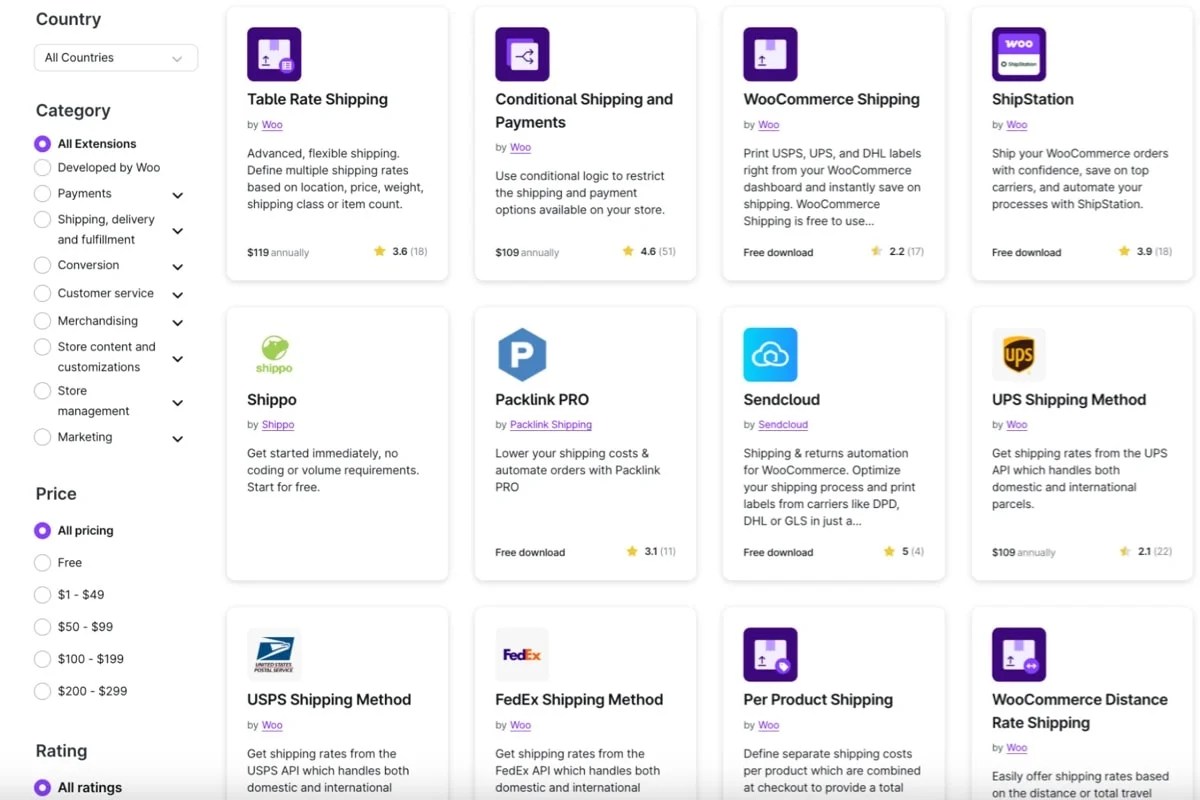
Coupon and discount tech
WooCommerce also offers a number of extensions in addition to those already mentioned that enable you to offer various kinds of discounts and coupons.
One of the most popular is Smart Coupons for WooCommerce, which lets you set up all sorts of sales and discounts based on very specific rules.
Run the sales campaign
With your ecommerce sales campaign planned, your technology in place, and your marketing ready to go, you’re all set.
Launch the campaign, and see what happens!
Whether this is your first sale, or if you’ve done this before but are excited about trying a new strategy, you can look forward to seeing your business grow as a result.
Measure results and build on it next time
As your marketing begins to go out and people engage with it and respond, you’ll see what’s working well and what you can do differently in the future. Depending on how effectively you’re able to track everything, here are a few metrics to watch for:
- Email engagement
- Social media engagement
- Sales revenue attributable to campaign
- Sales profits attributable to campaign
- Product page visits
- Landing page visits
- New members, subscribers, customers
- Coupons utilized
The specifics of your ecommerce sale will determine some of the metrics you can track. And the next time you want to run a sale, you can use the lessons learned from this one to make it even more profitable.
For some specialized content, read through a few more ways to use coupons and discounts without sacrificing profits.
And if you missed it before, here’s a step-by-step guide to the tech and processes to set up a sale in WooCommerce.
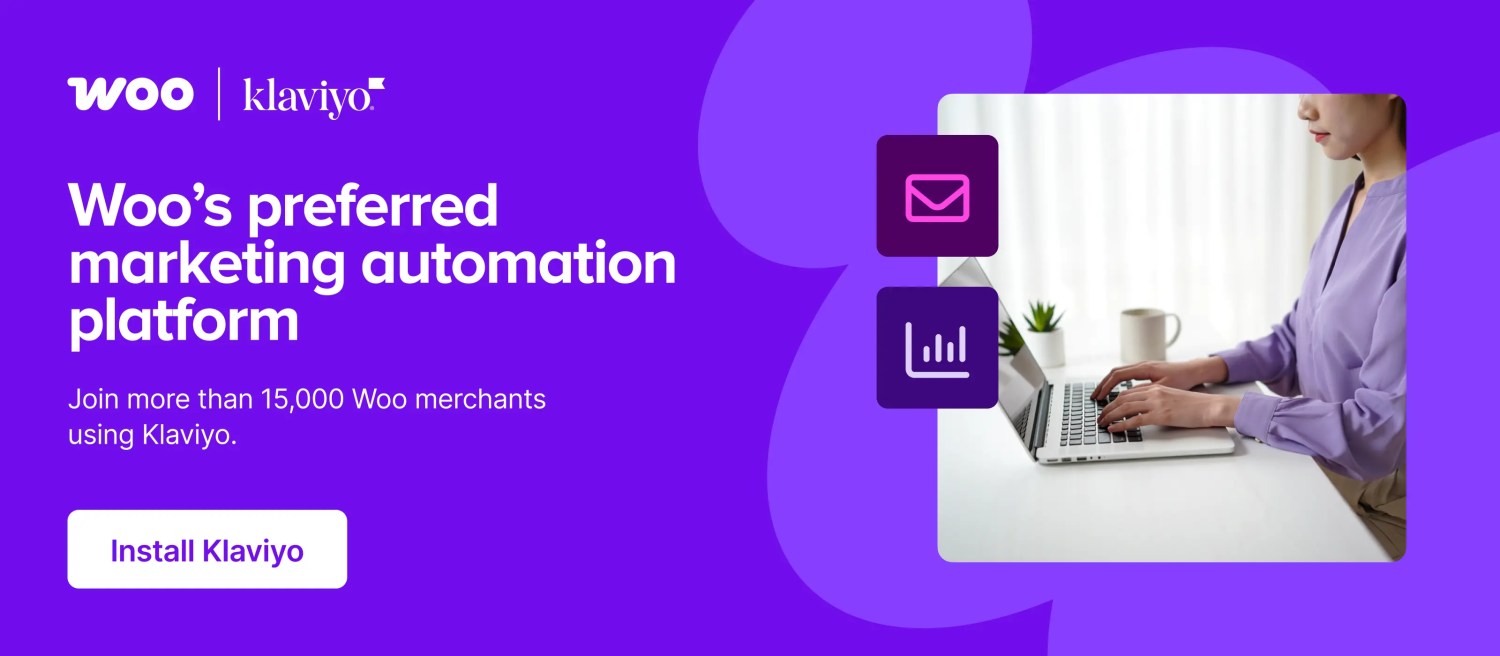
About
Vanessa Petersen
Vanessa has spent her career writing helpful things for people across the tech space. Outside of work, she enjoys training for triathlon, rotating through hobbies, and exploring new places both urban and natural. She has two fluffy cats, maintains a few succulents, and has far too many books on her TBR shelf.




